Rank Species | ||
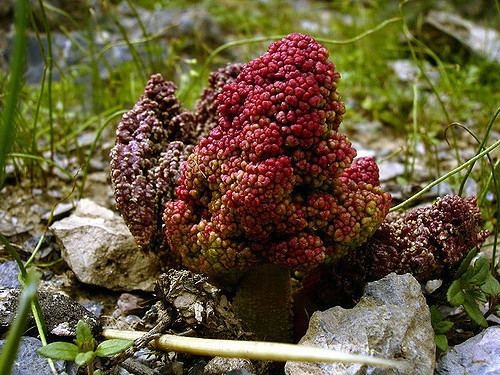 | ||
Similar Tournefort's gundelia, Rhubarb, Polygonaceae, Rheum officinale, Rheum rhaponticum | ||
Rheum ribes, the Syrian rhubarb or currant-fruited rhubarb, rhubarb-currant, warted-leaved rhubarb, warty-leaved rhubarb, rhubarb of Babilonia is an edible wild rhubarb species in the genus Rheum. It grows between 1000 and 4000 m on dunite rocks, among stones and slopes, and is distributed in the temperate and subtropical regions of the world, chiefly in Western Asia (Turkey, Syria, Lebanon, Iraq, Iran, Azerbaijan, Armenia) to Afghanistan and Pakistan. The Syrian rhubarb a partially commercial vegetable collected from the nature in Eastern and Southern Anatolia, Northern Iraq and partly Northwestern Iran in early spring. Rheum ribes is considered as a valuable medicinal species in herbal medicine.
Contents
The epithet of species name is derived from the Arabic word rībās (ريباس), referring to the Syrian rhubarb. The Syrian rhubarb is so called probably from the resemblance of its panicle of fruit to bunches of currants, is particularly ornamental by reason of its leaves as well as flowers and fruit.
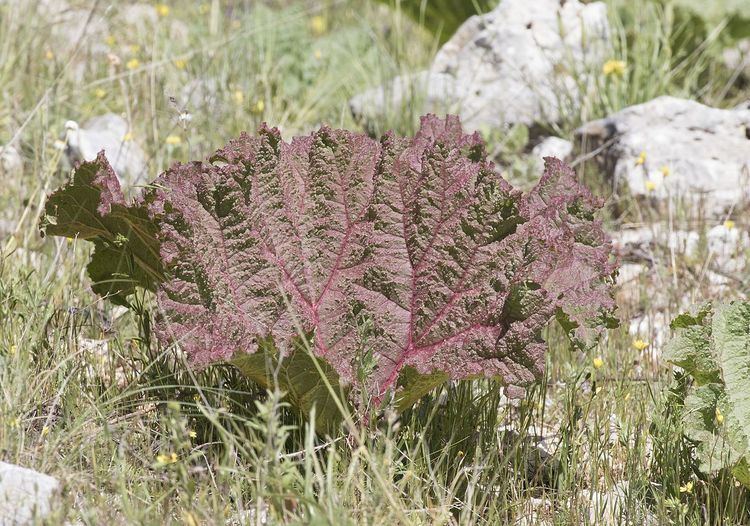
The Syrian rhubarb as "ornamental rhubarb" in horticulture with Rheum officinale.
Description
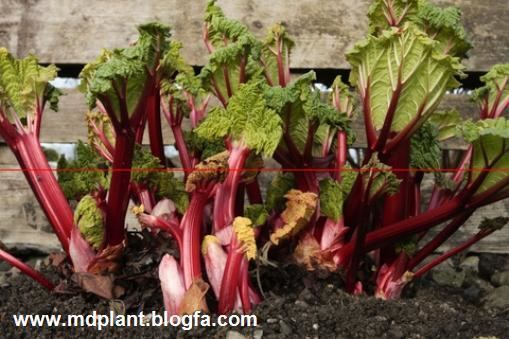
The Syrian rhubarb is a dichotomously branched perennial stout herb, up to 1 m tall. Has thick perennial rhizomes, annual large bean-like reddish-green leaves with stalks, edible flower stalks, yellowish small paniculated flowers, three-sided ovate-oblong nut and broad red winged dull brown seeds. Stem solid, warty, leafy below, leafless above. Irano-Turanian Region or Iran-Turan Plant Geography Region element.
Cooking
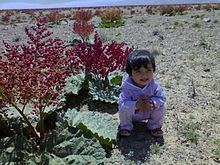
The edible part of the plant is the stem, which is eaten raw or cooked (ekşili ışgın and ışkınlı yumurta [lit. 'eggs with wild rhubarb, Rheum ribes'] in Elâzığ, Turkey; khoresh rivas [خورش ریواس] or "Persian rhubarb stew" in Iran) by the local people of Turkey, Syria, Iraq, Iran, Afghanistan, Pakistan. The leaves and petiole are often eaten raw as salad, sometimes sold in the local markets of Northern Balochistan.
Traditional and current medicinal uses
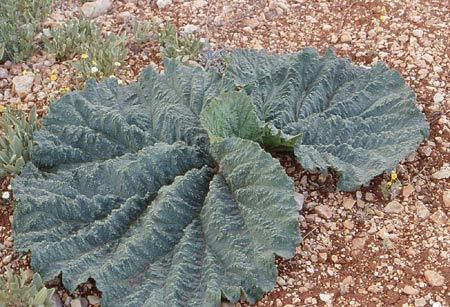
Rheum ribes is the source of one of the most important crude drugs in West Asiatic regions. These plant vitamins A, B, C are seen in abundance. Syrian rhubarb root (Rhizoma Rhei ribi) is used traditionally to treat diabetes, hemorrhoids, ulcers, and diarrhea. The plant is also used as a digestive and appetizer in Bitlis, Turkey. Traditional herbal medicine stem and root dry plant for the treatment of anemia, anorexia, weakness, anxiety, depression and diabetes. Traditionally Rheum ribes has been used in Iran as sedative and mood enhancer.
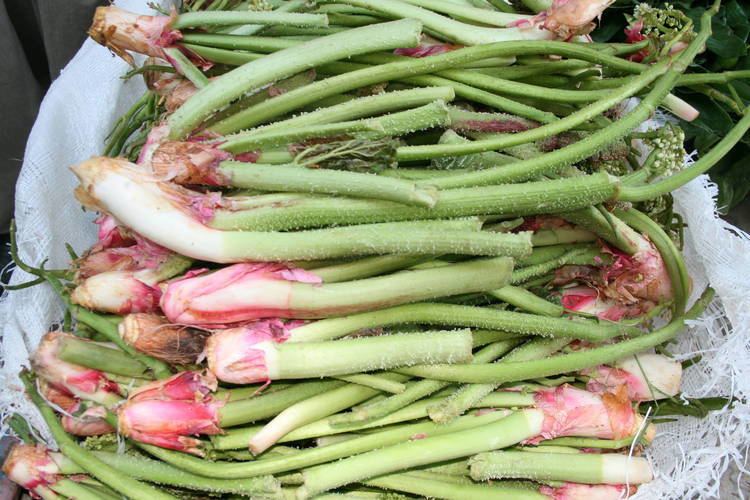
The anthraquinones chrysophanol, parietin and emodin, the flavonoids quercetin, fisetin, quercetin 3-0-rhamnoside, quercetin 3-0-galactoside and quercetin 3-0-rutinoside were isolated from the shoots of Syrian rhubarb.
Local names
Insects
Rheum ribes is main food plant of a hairstreak butterfly (Rhubarb Hairstreak Callophrys mystaphia; Turkish name: ışgınzümrütü [lit. 'Rhubarb Emerald']) in Iğdır, Van, Hakkâri, Kars, and Siirt provinces in eastern Turkey,.
Rheum ribes leaves is food plant of Xylena exsoleta moth in Van Province, Turkey.
